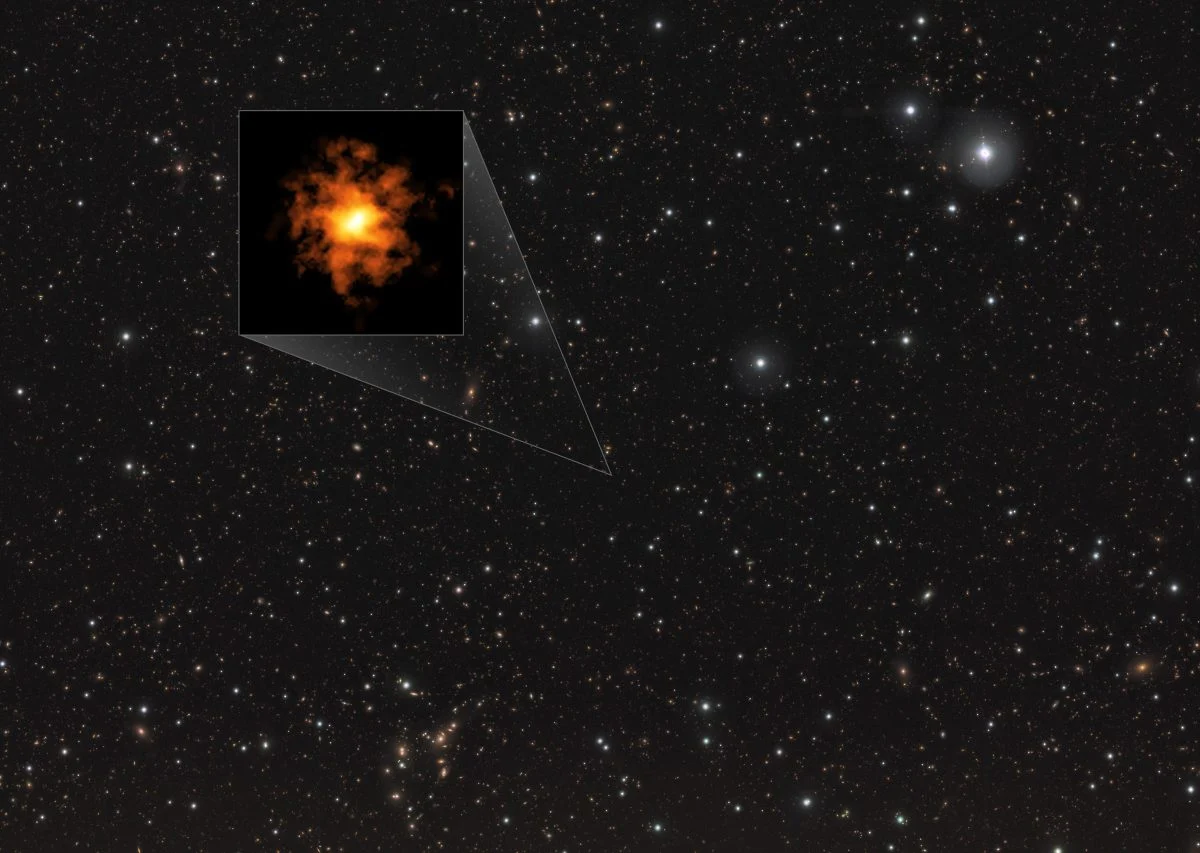Researchers found the youngest Milky Way-type galaxy. The distance to the galaxy is enormous. And the light that comes from that galaxy named REBELS-25 comes from the Universe that is only 700 million years old. The distance to that galaxy is enormous about 236 billion light years. And that means it's a very distant object on the other side of the universe. The rotation of the REBELS-25 is similar to the Milky Way, and that is one of the most interesting things that we can think of.
"At a redshift of 7.31, which corresponds to a luminosity distance of about 236 billion light years, REBELS-25 is an infrared luminous galaxy. It has a stellar mass of some 8 billion solar masses and its star-formation rate is estimated to be at a level of 199 solar masses per year." (Phys.org, REBELS-25 is a dynamically cold disk galaxy, observations find)
The high redshift means that the galaxy travels away from us. That doesn't mean that the distance to that galaxy is so big. That means the galaxy travels away from us. And another thing is that gravity also stretches light. We see the light that comes behind from that distant galaxy. And if that galaxy is a disk straight to us, that means the distance between the REBELS-25 and the Milky Way happens with maximum speed.
The REBELS-25 is so similar to our galaxy, the Milky Way but it's far younger. And the remarkable thing is that the galaxy rotates in the same direction as our Milky Way. So that galaxy rotates just as we do.
That causes questions about whether: could there be some kind of connection between the Milky Way and that distant galaxy. Light traveled a long time from that object to our galaxy. So that means we see that galaxy from the past.
That causes an interesting model or hypothetical theory. Can we look at our own galaxy from the past? If I were very daring, I could ask one question: is it possible that the REBELS-25 is the hologram that formed of information that traveled through the wormhole whose origin is the Sagittarius A* the supermassive black hole in the center of the Milky Way?
If wormholes exist they can transport light like optical cables. So, could the REBELS-25 be some evidence about that thing? Maybe, someday we find out that thing.
https://bigthink.com/starts-with-a-bang/youngest-milky-way-like-galaxy-rotates/
https://phys.org/news/2024-05-rebels-dynamically-cold-disk-galaxy.html
https://scitechdaily.com/astronomers-baffled-by-ancient-galaxy-that-mirrors-modern-milky-way/
https://en.wikipedia.org/wiki/Wormhole





No comments:
Post a Comment
Note: Only a member of this blog may post a comment.